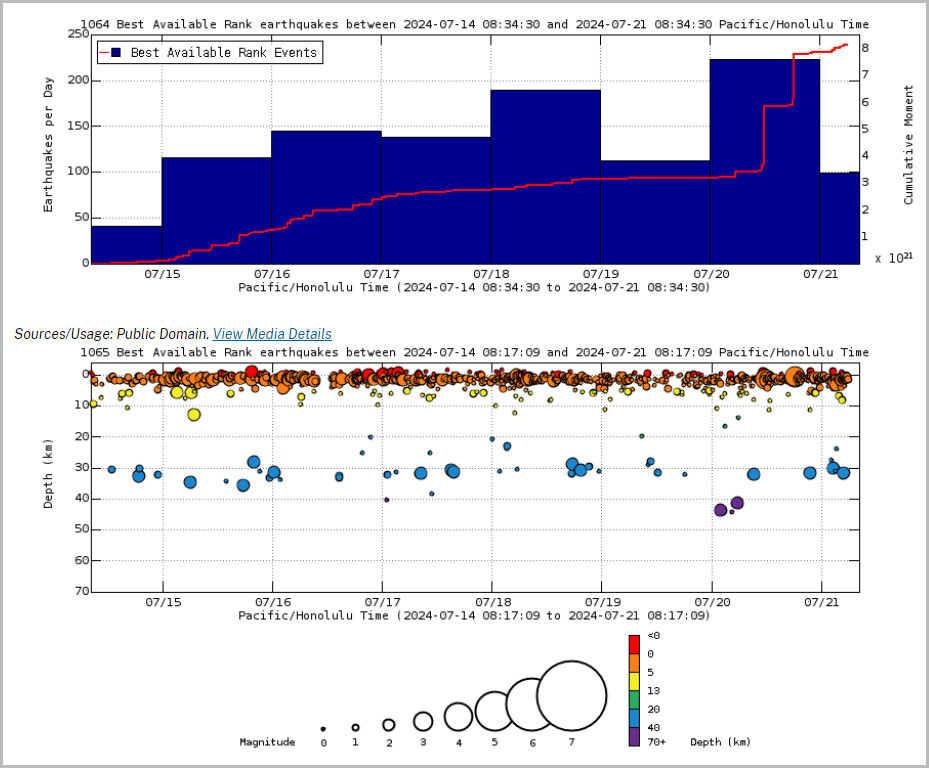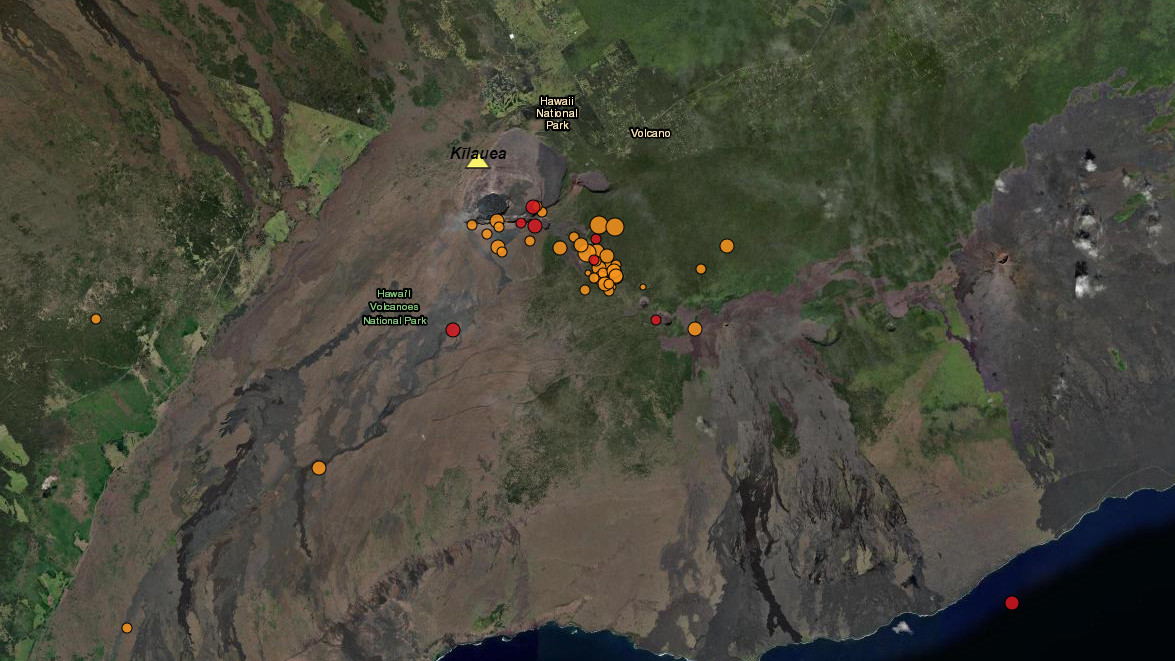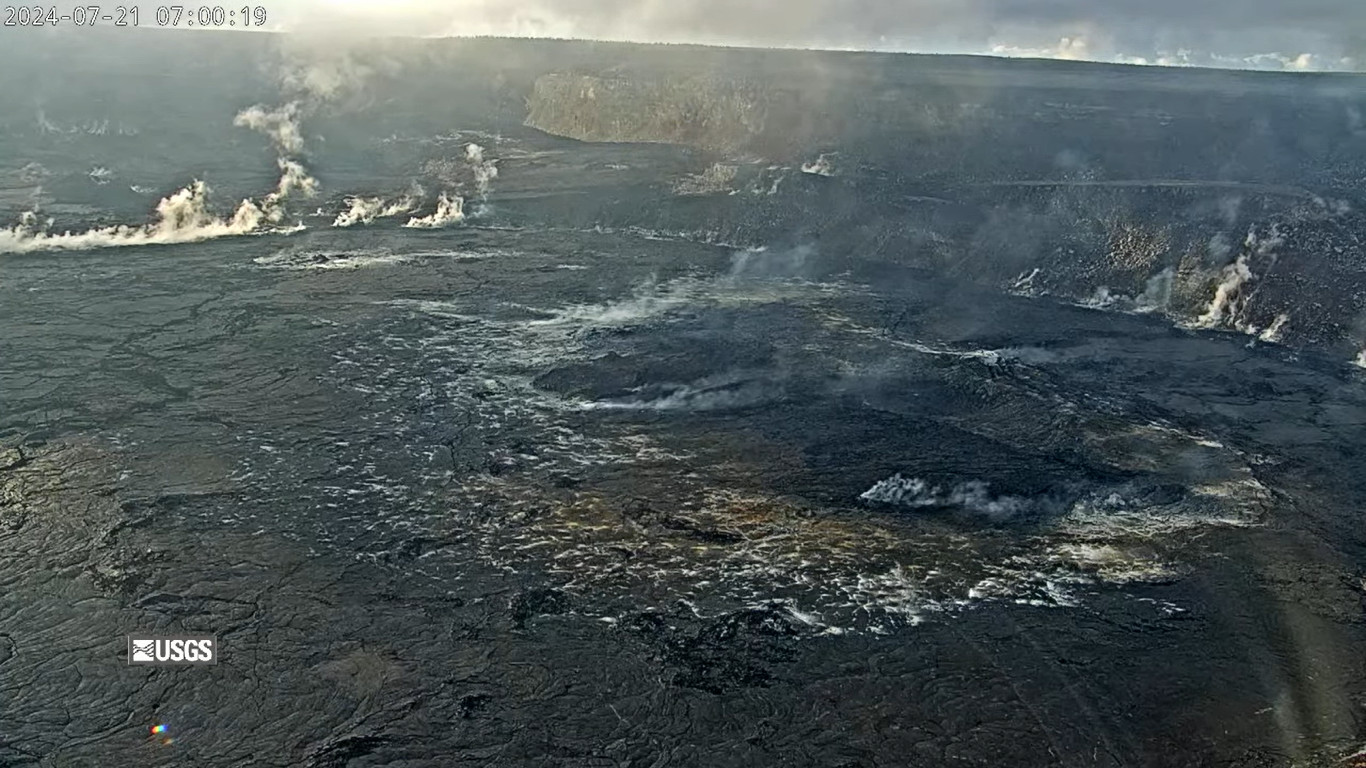(BIVN) – Kilauea is not erupting, and the USGS Volcano Alert Level remains at ADVISORY.
There have been no significant changes at the Hawaiʻi island volcano, although earthquake activity is once again increasing at the summit and the upper East Rift Zone. Gradual inflation of the summit and upper rift zones has also resumed.
Scientists say there are no signs of imminent eruption, but continue to remind the public that a substantial increases in seismicity and/or deformation could result in a new eruptive episode.
From the USGS Hawaiian Volcano Observatory update posted on Sunday morning, July 21:
Summit and Upper Rift Zone Observations: Over the past 24 hours, there were approximately 67 earthquakes detected beneath Kīlauea’s summit and approximately 172 earthquakes detected beneath the upper East Rift Zone, mostly at depths of 0–2 km (0.0–1.2 mi) beneath the ground surface. An increase in earthquake counts was observed beneath the summit and the upper East Rift Zone compared to the previous day (during which there were approximately 17 events detected beneath the summit, and approximately 61 events detected beneath the upper East Rift Zone). All earthquake counts are well below the counts recorded during the June 27–July 1 upper East Rift Zone swarm. In the upper East Rift Zone region, there were three seismic events larger than M3 with one earthquake being M3.5. All seismic events were smaller than M3 earthquakes in the summit region. Tiltmeters in Kīlauea summit region (instruments SDH, southwest of the summit, and UWE, northwest of the summit) show gradual inflationary ground deformation over the past day. GPS instruments around the summit region continue to show longer-term, gradual inflation since the end of the June 3, 2024, eruption. The most recent measurement of the summit’s SO2 emission rate was approximately 100 tonnes per day on July 17, 2024.

Above Top: Number of earthquakes per day during the past week (blue bars). The red line is the cumulative moment (energy) release. Bottom: Depth of earthquakes during the past week in the area shown on the map above. Depth is reported relative to sea level, which is equal to a depth of zero on the above plot. On both figures, circle-size represents magnitude, and color indicates depth. (USGS graphs)
Middle and Lower Rift Zone Observations: Rates of seismicity and ground deformation beneath the middle and lower East Rift Zone and lower Southwest Rift Zone remain low. Recent eruptive activity and ongoing unrest have been restricted to the summit and upper rift zone regions. Measurements from continuous gas monitoring stations downwind of Puʻuʻōʻō in the middle East Rift Zone—the site of 1983–2018 eruptive activity—remain below detection limits for SO2, indicating that SO2 emissions from Puʻuʻōʻō are negligible.
Analysis: Following the eruption on June 3, 2024, magma has been repressurizing the storage system beneath Halemaʻumaʻu and the south caldera region, activating earthquakes in the caldera south of Halemaʻumaʻu and in the upper East Rift Zone. At this time, it is not possible to say whether this activity will lead to an intrusion or eruption in the near future, or simply continue as seismic unrest at depth. Changes in the character and location of unrest can occur quickly, as can the potential for eruption, but there are no signs of an imminent eruption at this time.



by Big Island Video News9:31 am
on at
STORY SUMMARY
HAWAIʻI VOLCANOES NATIONAL PARK - Earthquake counts have picked up once again under the summit and upper East Rift Zone.